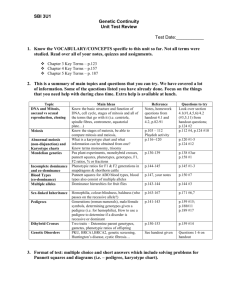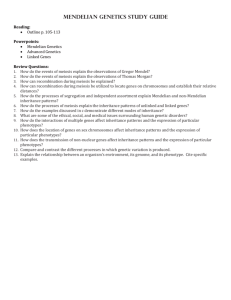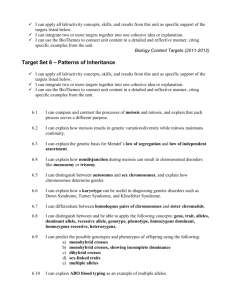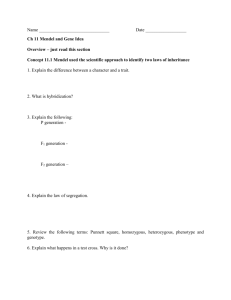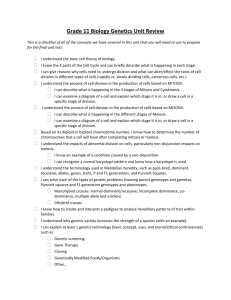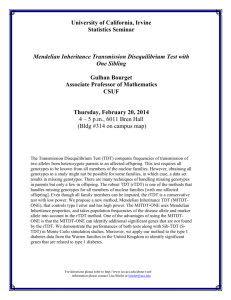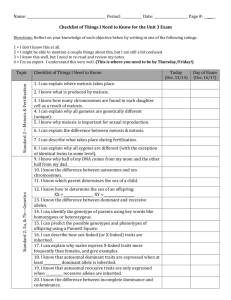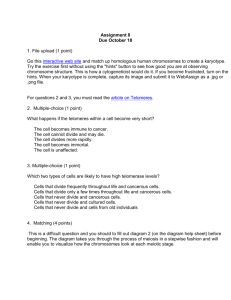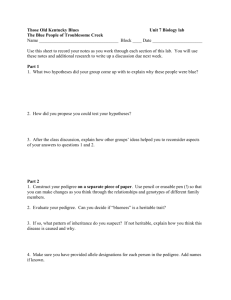Meiosis and Mendelian Genetics
advertisement
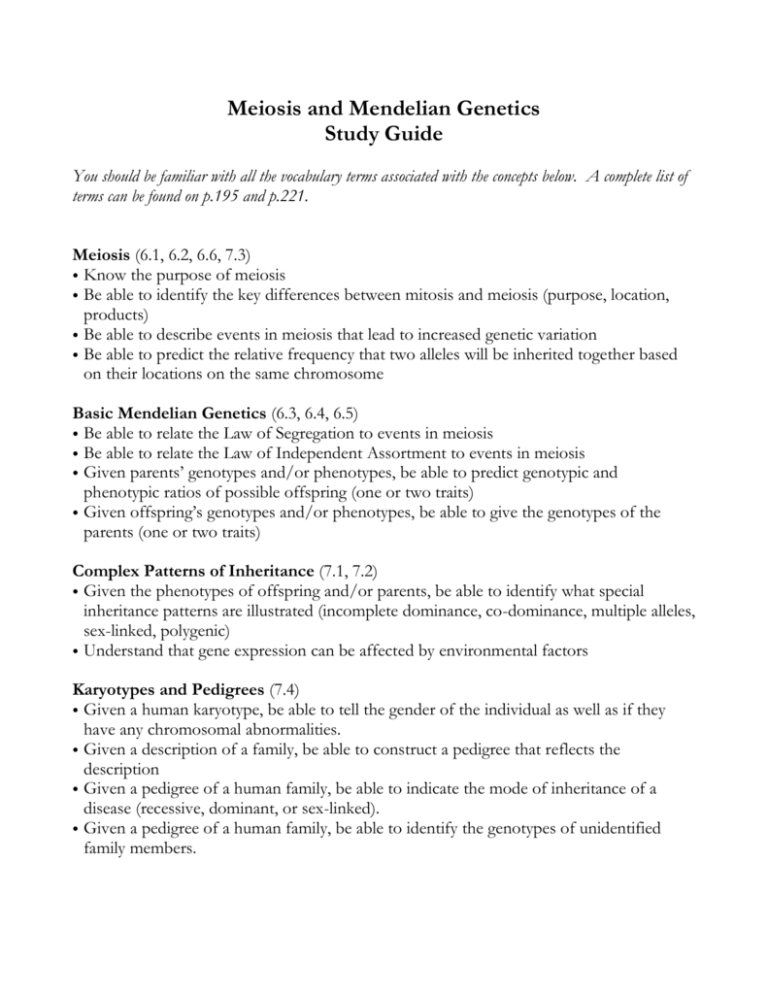
Meiosis and Mendelian Genetics Study Guide You should be familiar with all the vocabulary terms associated with the concepts below. A complete list of terms can be found on p.195 and p.221. Meiosis (6.1, 6.2, 6.6, 7.3) • Know the purpose of meiosis • Be able to identify the key differences between mitosis and meiosis (purpose, location, products) • Be able to describe events in meiosis that lead to increased genetic variation • Be able to predict the relative frequency that two alleles will be inherited together based on their locations on the same chromosome Basic Mendelian Genetics (6.3, 6.4, 6.5) • Be able to relate the Law of Segregation to events in meiosis • Be able to relate the Law of Independent Assortment to events in meiosis • Given parents’ genotypes and/or phenotypes, be able to predict genotypic and phenotypic ratios of possible offspring (one or two traits) • Given offspring’s genotypes and/or phenotypes, be able to give the genotypes of the parents (one or two traits) Complex Patterns of Inheritance (7.1, 7.2) • Given the phenotypes of offspring and/or parents, be able to identify what special inheritance patterns are illustrated (incomplete dominance, co-dominance, multiple alleles, sex-linked, polygenic) • Understand that gene expression can be affected by environmental factors Karyotypes and Pedigrees (7.4) • Given a human karyotype, be able to tell the gender of the individual as well as if they have any chromosomal abnormalities. • Given a description of a family, be able to construct a pedigree that reflects the description • Given a pedigree of a human family, be able to indicate the mode of inheritance of a disease (recessive, dominant, or sex-linked). • Given a pedigree of a human family, be able to identify the genotypes of unidentified family members.

